Justin Robinson's Blog, page 15
April 17, 2015
Watch This: The Americans
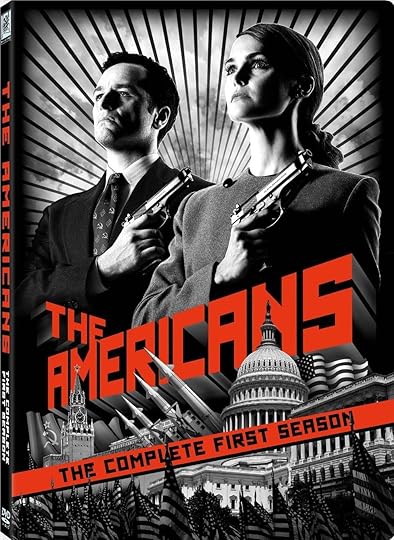
Buy this. Now.
We live in an era of great television. The idea that TV is better than movies isn’t even a bold statement anymore; it’s just a fact usually greeted with a halfhearted shrug and a “Whaddya gonna do?” The funniest part, to me, is that due to the tyranny of the PG-13 rating, even what was thought to be the exclusive purview of movies — blood and nudity — is now more often seen on the small screen. The essential problem is well known: in an era of great television, good television can fall through the cracks. But what if this happens to great TV? What if this happens to a show with the potential to crack the all time list?
That’s what I’m talking about today. I’m talking about the FX show The Americans, which is already the greatest spy show ever made and is flirting with pantheon levels here. While I’m not ready to put it there yet, mostly because it’s not over, I would stack these first three seasons against the first three seasons of any other show. Ever. Yes, even The Wire.
So what is this show that has me so tied up in knots that I’m comparing it to the consensus best show of all time? It’s the height of the Cold War in the early 1980s, when the USA and USSR were a couple inches from armageddon and fashions weren’t in much better shape. While most shows would be about the heroic American agents fighting to prevent the end of the world, The Americans inverts the premise. The heroes are the Russian spies in deep cover as average Americans, doing the sorts of morally gray acts that we demand of our clandestine agents, but without the comforting sheen of “doing it for the right side.”
And that’s the first part of the genius of the show. The Cold War, which we are used to seeing from the side of the USA, we are now seeing from the Russian view. While both political parties in the modern day are intent on canonizing St. Reagan, it’s easy to forget he was an utter disaster as a president, and for our enemies, he was viewed — with some justification — as a dangerous madman. He wasn’t the only one. It was a Russian submarine officer who chose not to escalate the Cuban Missile Crisis to a nuclear exchange, and it was a Russian missile commander who chose not launch in 1983 when everyone — and his own instruments — told him to. While I’m not so naive as to call the Soviets “the good guys,” they don’t deserve the brand of villain simply because they lost.

This is Stanislav Petrov. He is the reason that you, personally, are alive today. Maybe give him a thank you.
That’s the second point. Our heroes, Elizabeth and Phillip Jennings (Keri Russell and Matthew Rhys) — and we still don’t know their full Russian names three seasons in — are fighting for the losing side. Unless this is an insane alternate history, they will lose. They have no idea, and in fact believe they are doing all they can to support what they feel are the good guys. The show first explores the way the US was on the wrong side of history as Reagan was a huge supporter of South Africa’s apartheid government, then the ways in which the US is repeating the mistakes of the USSR with the war in Afghanistan. Again, it’s a mistake to think of either side as “good” or “evil,” but it provides both context for the struggle and convenient morality points. “Of course we’re right,” Elizabeth might say, “we’re fighting the right wing apartheid state.” She chooses to ignore that this is only the case because the US chose the other side.
The pitch of this show could have been trite. Had it just been one Russian agent, a man, with an American wife and kids who have no idea what he’s up to, it would be like the spate of anti-hero shows out there: The Sopranos, The Shield, Breaking Bad, and so forth and so on. These shows are great, but the male anti-hero family man is getting a little stale. Instead, The Americans casts a couple — Elizabeth with as much if not more agency than Phillip — and places them in the role of anti-villains. They are not characters doing the right things for the wrong reasons, but the exact opposite. When they do something horrible, they both have moments of understated grief, trying to understand that while what they did was wrong, they will save many more lives in the future.
This led to an incredible moment in a recent episode, when Elizabeth calmly forced a woman to kill herself to conceal their break-in of a factory. The two had a companionable conversation, and as the old woman drifted away, Elizabeth was fighting back tears. She promised the woman that she would not hurt her son, and when all the artifice was stripped away, Elizabeth had to accept her victim’s judgment. It was a quiet, beautiful, haunting scene that was more affecting than the deaths of long term characters. We’d known this old woman for maybe twenty minutes, but the quiet dignity of her performance, the coiled grief of Keri Russell’s, and the magnificent writing, elevated her into a ghost Elizabeth will carry with her the rest of her days.
The weak link in any show like this is inevitably the children, but The Americans has learned from the lessons of other examples. The elder child, Paige, has been searching for who she is (partly because she subconsciously knows her parents haven’t been honest about who they are), and the writers bravely pulled the trigger on the revelation that’s been stewing from the first episode. We’re not waiting around for Walter, Jr. to look up from breakfast long enough to discover his father is Satan. We get to see Paige fight through that. Even the thankless role of Second Child has been better than in any other series. Though their younger son Matthew is often shunted to the background, here the show acknowledges this, and lets that be a function of his parents leaving him in the background as well. He’s unmoored, and unlike Paige, who searches for a larger group to belong to, Matthew has not even that much direction.
With all of this roiling around, it would be easy to forget the spycraft. The Americans features easily the best ever seen on television, combining clunky ‘80s tech, an array of bizarre wigs, honeypots both sexy and extremely not, and emotional stakes usually absent in ice cold spy fiction. While Elizabeth and Phillip’s marriage was a creation of their masters in the KGB, they spent the first season falling in love, and now their extramarital trysts, necessary to ensnare assets, have an element of tragedy to them. Every betrayal, even though there have been too many to count, still hurts a little. The tiny confessions between them now have barbs.
The Americans is the best show on TV right now, without qualification. It manages to walk the line between prestige programming and pulpy fun. Why should we sacrifice sexy thrills for very serious points? Well, thanks to The Americans, we don’t have to.
Filed under: Projected Pixels and Emulsion

April 10, 2015
I Miss Your Scent, Part II
Sometimes TV shows end. Sometimes, that’s a good thing. But on even some of the worst shows, the ones you wished the network had taken out to the Pine Barrens and put a bullet in, will have characters you just can’t let go. The ones that really resonated, and felt like they could have a life beyond the show that gave them birth. In my second entry into this series, I’m going to take some characters from cancelled or soon-to-be-cancelled shows and put them on a current TV show, to give them that richly deserved second life.
Tig and Venus to Bates Motel
While the final season of Sons of Anarchy was a flabby slog, it did manage to end on a high note. For awhile, there wasn’t much to do but root for SAMCRO’s odd couple: perpetually horny psychopath Tig Traeger and his transgendered prostitute love interest Venus Van Dam. While the pairing could have been played for broad comedy, instead the notoriously pulpy biker show went with a subtler approach (the only time it ever did), portraying the two as strange lost sous trying to make this crazy thing called love work. They’d fit right in with the noirish oddballs on Bates Motel, and Venus would be a great call-forward and inspiration to Norman’s own gender confusion.
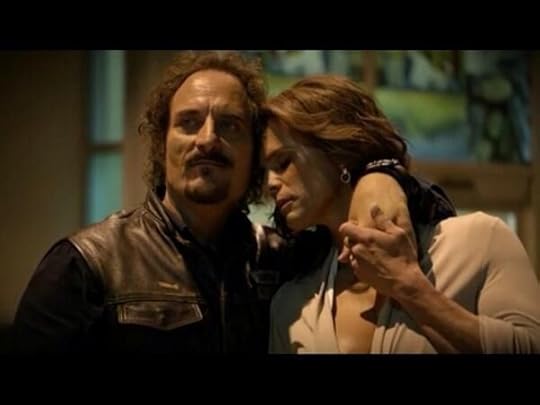
They’re in love!
Tim Guterson to Banshee
If Justified had one major flaw through its run, it’s in the sorely underutilized Tim Guterson. A laconically sarcastic sniper, he hinted at hidden depths with his love of YA fantasy about Native American princesses and his penchant for openly flirting with tough guys. He would fit right at home with the badasses over on the best action show ever, Banshee. If there’s one person who could match wits with Job, and perhaps even romance everyone’s favorite hacker, it’s Tim.
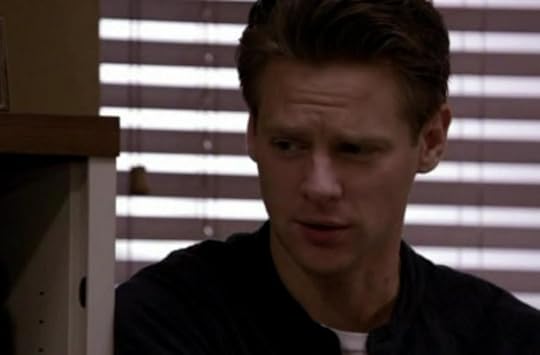
“Turns out that Native American princess was a Littlestone.”
Sam Axe to Arrow
Burn Notice has evolved into one of my comfort shows. If I want to put something on and not concentrate too much, I go for my favorite Miami spy’s Robin Hood adventures. Sam was the early breakout character, mostly due to being played by national treasure and noted chin Bruce Campbell. His brand of easy-going but cool heroism and his legitimate badassery (people forget to their peril that Sam was a Navy SEAL), would make him a good fit over in Star(ling) City. He might have to wear a coat, though.

“You know vigilantes… buncha bitchy little girls.”
Joan Harris to The Americans
Christina Hendricks is awesome. This really isn’t a controversial statement. I’m not just talking about her appearance, but yes, she is ridiculously beautiful and the reincarnation of some beauty goddess from the ‘60s. Mad Men is wrapping up in the ‘70s, but who’s to say Joan couldn’t find work at, say, the CIA? She could have secrets that the KGB is desperate to romance out of her, and she has a steely determination that hints it might not be quite so easy. Put her on The Americans, maybe the best spy show ever, and watch her fit right in. Plus, Christina Hendricks in amazing New Wave fashions.
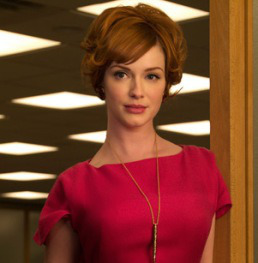
You’re welcome.
Parker to Orange is the New Black
Not all of these are really built to last. Parker, the thief on the extremely fun caper show Leverage, would last maybe a day or two in prison. Not that she’d get shanked — Parker would be the one doing the shanking — but that the idea that anything could hold her near supernatural abilities in check is patently ridiculous. Still, it would be fun to watch her socially stunted super-criminal interact with the rest of the gangs on America’s favorite prison show. Actress Beth Reisgraf is legitimately funny, and getting a chance to show that off would be welcome. She breezes into the prison, then just vanishes one day and everyone wonders if that weird elf lady was real or not.

“Maybe I should be on Arrow…”
Eric and Pam to Supernatural
True Blood was never a good show. Sorry if I burst any bubbles there. It was, on many occasions, a fun show. As it marched joylessly through several unwatchable seasons, the amount of characters that were worth spending time with dwindled to two: Eric and Pam. (And Jessica, but my motives there are not pure.) Even in the dreadful final season, which, if not for Dexter, would stand as the worst final season of all time, Eric and Pam were still reliably entertaining. They need a showcase for the two of them and the Winchester brothers need some villains who are not demons, not angels, and who can put up a good fight and deliver a good one liner. One possible downside: the homoeroticism between Alexander Skarsgard and Jensen Ackles might explode the internet.
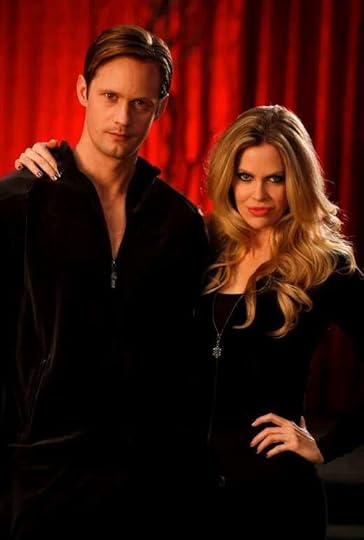
I kind of already miss them.
Walter Bishop to Orphan Black
I’m late to the party with this one, but in my viewing of Fringe, I have predictably fallen for lovable mad scientist and gourmand Walter Bishop. What the man needs is another scientific conspiracy to suddenly recall that he’s up to his eyeballs in, and that’s over on the wonderful Orphan Black. No one with any sense can hear that and not instantly want to see every incarnation of Tatiana Maslany try to make sense of Walter as he rambles, makes saltwater taffy, and solves mysteries.
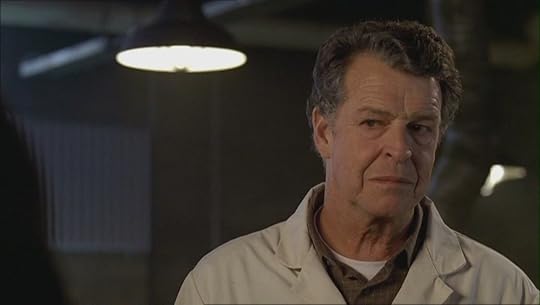
“Can’t tell if serious… or from alternate dimension.”
Dexter Morgan to Hannibal
No one wants more Dexter Morgan, except maybe Showtime, because they are ruled by the devil. Still, Dexter living through his show was one of the great crimes of narratives. Hannibal Lecter hunts serial killers too, but he eats him. How great would it be to see Dexter on Hannibal’s table?

Surprise, lumberfuckers.
It won’t happen. But it’s nice to think about, right? Especially that last one.
Filed under: Nerd Alert, Projected Pixels and Emulsion

April 3, 2015
Lifetime Theater: Jodi Arias: Dirty Little Secret
Some crimes, by their very nature, become imprinted upon the pop culture psyche. Some salacious detail, some head-scratching alibi, some bizarre circumstance, elevates what is by any sane metric a tragedy into a culture-wide joke. These are the crimes that Lifetime likes to adapt. And why not? Brand recognition is the single most powerful force driving blockbuster production, and the same principle works for true crime potboilers on basic cable. Fortunately for the Lifetime network, the case of Jodi Arias had all of the above, and fortunately for me, they decided to go completely fucking bananas in bringing her story to the screen.
The movie opens with what looks like an impromptu sex tape, complete with changing angles that the two people in the video couldn’t be catching… thus implying the existence of a horny gnome. Some tiny person is scampering over the writhing bodies, trying to get the best angle without actually showing any of the naughty bits, and I’m going to assume it’s an Amish-bearded, pointy cap-wearing gnome, because you can’t control me, Mom. It’s not the first movie to require a horny gnome to make sense, or even the first Lifetime movie, but it does allow me to add the Horny Gnome Implication to my rapidly-expanding list of Bad Movie Theories.

I film sex tapes and protect hedgehogs… and I’m all out of hedgehogs.
So after this afternoon delight, we go right to a bloody crime scene. It’s a seriously bloody crime scene, too. Like someone sacrificed a fatted calf to Baal at the start of the rainy season. The movie was hitting a checklist right there up front as though to prove the viewer discretion — that’s right, we get one of those on a Lifetime movie — was not lightly given.
Boy howdy it is not. Just assume, for legal and sanity purposes, when I’m throwing out names of real people, I’m adding in there “as depicted in the Lifetime movie.” I don’t know what Jodi Arias is like in real life. Ditto for Travis Alexander or any of his apple-cheeked milk-swilling friends. I’m sure everyone is delightful. So when I start a sentence with, “Jodi Arias has the kind of rocky home life and absent father that guarantees her most viable career option will be ‘shallow grave,’” I’m not talking about a real person here. Or maybe I am. Maybe this shit is a documentary.
Right, so Jodi Arias takes one look at motivational speaker Travis Alexander and decides that he needs to be inside her immediately, if not sooner. She even follows him into the bathroom to talk at him. One problem: Travis is a Mormon, and he’s not supposed to be into that kind of thing. Turns out, he really is. Before you can say “Brigham Young,” he and Jodi are having the kind of sex that human traffickers teach you about before long trips. There’s a throwaway line where one of his pals mentions that Travis refers to Jodi as his “Three-Hole Wonder.” Of course, the big problem is that Travis is ashamed of having what is either a fuck-buddy or a horny girlfriend, so Jodi becomes an open secret. A dirty little open secret. Title!
Eventually, Jesus wins over amazing sex. He dumps Jodi and hooks up with wholesome Katie. They do crazy things like not kissing and falling asleep on the couch while watching Disney movies. It makes me a little physically ill. Jodi doesn’t take this lying down, and completely flips her lid, leading to one of the greatest moments in Lifetime movie history. Set to the tune of Evanescence’s “Bring Me to Life,” one of the most ridiculously bombastic (and possibly Christian) songs in existence, Jodi straight up stalks Travis like he’s an antelope on the Serengeti… wearing a bike helmet and telling unsuspecting bystanders about Kolob. It’s hard to even know what Lifetime makes of this either. Travis’s hypocrisy in using Jodi for sex but eschewing a deeper commitment are on display, but on the other hand, she’s stalking him to Evanescence. Is this a you go girl moment or a ma’am could you please vacate the premises moment? No one knows, and that’s why Lifetime is so very wonderful.
Jodi’s behavior gets more and more erratic as she breaks into Travis’s house and photographs that impromptu sleepover (then decorating a mirror in a collage), leaving harassing notes with religious overtones on Katie’s car, and, oh yeah, firing an empty gun at a wall. She manages to get Travis back briefly (which is the horny gnome scene from the beginning), but after an inflammatory text from Katie (who mentions that Travis said Jodi was “only good for one thing” which is totally unfair considering her nickname had the number three in it), Jodi goes into the shower, stabs Travis to death, cuts his throat down to the bone, and shoots him in the head. I’m not sure Jodi knows the difference between Mormons and zombies.
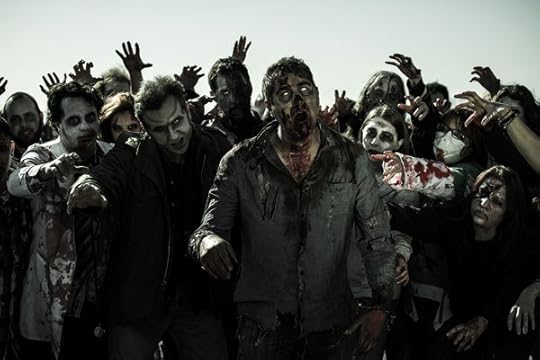
“They want to ride bikes and not drink caffeine! Headshots only!”
The investigation is laughably quick, with Dexter’s David Zayas discovering a photograph in a damaged camera of the murder in progress. This blows a hole (though at least not three) in Jodi’s whole “ninjas did it” alibi, and she’s quickly convicted. The film ends with a note that Arizona is having another trial to see if she deserves the death penalty.
This movie is a spiritual cousin with the similarly muddled Blue-Eyed Butcher. Jodi is held out as a sex-crazed freak, an irresponsible hardbody who is apparently allergic to cloth touching her ass-cheeks. She seems like the kind of character that exists for Lifetime viewers to cluck their tongues disapprovingly at. Travis doesn’t fare any better, though. While it’s tough for me to see him sympathetically, I guess you can see him as a man torn between faith and venal desires. Really, the movie (and me) sees him as a hypocrite who wants to use a fragile and desperate young woman for sex, then throw her away as the very acts he uses her for render her unsuitable for marriage. It’s that gross bro-logic, the noxious double-standard that permeates the culture, and here it’s hidden behind the veneer of religion, that magic veil that you’re never allowed to question. “No, I don’t hate women. My religion says this, and you have to respect that.” Then again, Jodi Arias is clearly fucking crazy, so maybe he made the right call but for the wrong reasons.
The weirdness started from the beginning. Jodi is played here by Tania Raymonde, who might be most famous as Alex in Lost, but will always be Malcolm’s quirky admirer in Malcolm in the Middle. I know it’s unfair to her — she’s a working actor, she needs gigs. But I have trouble seeing someone I associate with a sweet, funny, and extremely underaged character prancing around in lingerie. As Lifetime performances go, she does good work, though. There’s an element of wild-eyed obsession to her line readings that gives every scene, no matter how innocuous, a livewire energy.
So what did we learn? Religion is important! There’s a lot of institutionalized sexism there, and hell, in the culture at large that gets foisted on religion because if God thinks it, it can’t be wrong. Also, maybe don’t make comments like “I’ll eventually marry a Mormon” to your unhinged non-Mormon girlfriend. And don’t stab, almost decapitate, and shoot people. That sucks too.
Filed under: Projected Pixels and Emulsion Tagged: Lifetime Theater

March 27, 2015
Now Fear This: Hellbound: Hellraiser II
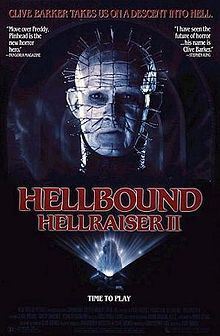
Clive Barker, early advocate of acupuncture.
Whenever any halfway decent sequel comes out, critics bust out the boilerplate and claim that it’s better than the original. Yet if you wait a year, talk to actual fans, the number of films where this is actually true drops off sharply. Only a few have held onto the title, movies from franchises with names like Godfather, Terminator, and Star Wars. I would add the second Hellraiser film to that list, with the caveat that it’s not as good as the ones above. Or maybe I just want to use Hellraiser and Godfather in the same sentence.
Hellbound: Hellraiser II is better than the first Hellraiser movie. Depending on your opinion of that first one, I could merely be damning with faint praise. But the Hellraiser franchise, despite only two good entries (and six nigh-unwatchable ones), have a hallowed place amongst horror fans. Part of this is that they’re the creation of legendary horror author Clive Barker, and the first attempt to bring his rather uncomfortable highly-sexual aesthetic to movie theaters. The other is that Pinhead (known as Priest in the original script, or simply “Lead Cenobite” before the fan-nickname took hold) is a great character. Instantly iconic, along with his other three Cenobites, he manages to be both an incredible design while saying some of the coolest shit it is possible for a bad guy to say. How do you not love a villain who tells someone their “suffering will be legendary, even in hell”?
I saw the original Hellraiser when I was too young. Then again, I’m not sure there is an appropriate age for a film so steeped in an extreme interpretation of S&M. I have to chalk this one to the ‘80s being a vastly different time. I did see the movie early enough that I hadn’t even heard the name “Pinhead,” though (and if fact assumed those were nails in his face). I only had the vaguest idea of what was really going on, though the dark brilliance of it all was captivating. There was no one else out there doing what Barker was doing: harnessing the over-the-top sexuality of movies like The Hunger and Cat People, then marrying them with the fashions of Road Warrior and the gore of a slasher picture.
The sequel was just as much of a revelation. The modern blockbuster-driven studio system has done everything it can to remove the quirky corners of movie universes. Every question needs an answer, every line has to have a point. Yet one of the things I love about the time before was the way the movies always seemed to much bigger than they actually were. By leaving these unanswered questions, they created soil rich enough to be strip mined in this modern age. The only reason Terminator as a franchise can spawn five movies and a good TV show from a single low-budget horror movie is that there were evocative speeches and great throwaway lines.
Barker excels at this kind of storytelling. The man cannot write a simple horror short without hinting at some vast mythology just out of reach of the pages. His novella — and yes, all nine (and counting) Hellraiser movies are based on a single novella — creates this idea of angels of sensation, humans who found pleasure and pain so extreme they have been hopelessly mutilated into supernatural beings. These creatures, the Cenobites, can contacted through the use of a puzzle box (known as a Lament Configuration because Barker is the best at naming things). The first movie, written and directed by Barker, is the story of a man who found the Cenobites and now wants to escape with the help of his brother’s wife, with whom he has been having an affair. Kirsty, his niece, is the film’s Final Girl, managing to return her murderous uncle to the clutches of the Cenobites before banishing everyone before she becomes a guest star of Robert Mapplethorpe’s Saw.
The sequel finds her confined to a mental institution. Unfortunately for Kirsty, the institute is under the control of Dr. Channard, a brain surgeon who is absolutely obsessed with the Cenobites.
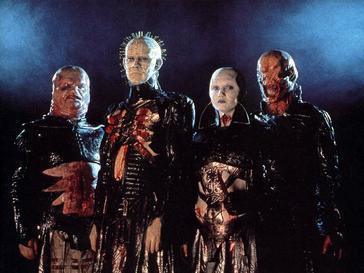
“Let’s see, Pinhead’s the cute one, Butterball’s the shy one, and Chatterer is the funny one!”
Using the mattress where Julia, Kirsty’s adulterous stepmother was killed, and a crazy person who wants nothing more than to cut the phantom maggots off his body with a straight razor, Channard summons Julia back out of hell in one of the most over-the-top gore scenes in movie history. It seems like a redux of the first, with Julia standing in for Frank, but Julia has motives of her own that are not apparent until much later, creating a far more layered villain. The gore effects here are a triumph, with the most striking scene of a skinless Julia standing in a bloodstained white suit in the middle of Channard’s antiseptic house.
Channard’s other tool is the catatonic Tiffany, a girl who compulsively works puzzles while remaining lost inside her trauma. When he hands her one of the three Lament Configurations he owns(!), she quickly solves it and opens a portal. The Cenobites emerge, ready to carve her into something more disturbing when Pinhead stops them. “It is not hands that summon us. It is desire,” he says, continuing his trend of saying awesome things. He leaves the door open, and soon Kirsty and Tiffany, Channard and Julia, are exploring Hell. It’s about as pleasant as it sounds.
This created a huge springboard for subsequent stories. While the movies that followed this one were increasingly silly — and Hell on Earth is already plenty stupid — the comic series was excellent. In the late ‘80s and early ‘90s, comics were often the best place to follow a beloved property as it expanded its world. The Aliens comics are vastly superior to Alien 3 and Resurrection and the anthology Hellraiser book isn’t even the same species as the later films. It is the lesson of Hellbound that the comics follow, exploring the idea of the hierarchy that’s already emerging in Hell. At the top, there is Leviathan, a rotating shard that spews blackness and dissonant chords. Why would the lord of a dimension of flesh be a nearly featureless polygon? Why do some of the devotees become Cenobites while others are confined to torment like Frank? The comics spent a lot of ink and nightmares answering some of these questions, and in the process created more Cenobites to add to the menagerie.
None of that would have been possible without Hellraiser II, the last of the good Hellraiser movies. It’s a sprawling story, featuring two worthy heroines going up against the kinds of villains who would make Batman shit his tights. It drops so many hints, asks so many questions, that even my mind, too young to have seen it, was already feverishly filling in the blanks. Much like the Alien series, Hellraiser will always be two movies and then the comics for me. This film blazed the trail, and though it is an oddity, I remain a devoted fan.
I initially thought this was far too popular a movie to be included in Now Fear This. It seems as though the later installments have done what not even Dr. Channard could: it blunted Pinhead’s effectiveness as a horror icon. Now, the first two movies, and especially the superior second, stand as gems waiting to be rediscovered by a new generation of horror fans.
Filed under: Projected Pixels and Emulsion Tagged: Now Fear This

March 20, 2015
Liner Notes: The Last Son of Ahriman
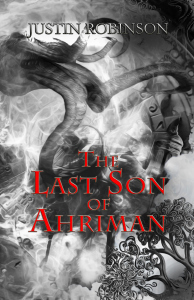
Tentacles! Tentacles everywhere!
Between this blog and my feature over at Fanboy, I think I’ve come out as an avid roleplaying gamer at least half a dozen times. For some reason, it still feels like this weird, shameful secret. Probably because it sort of was back before the internet let everyone know that no matter how odd the hobby, there was a vibrant subculture that was at least as militant about it as you were. You like to put oxen on trampolines? Awesome, there’s a name for that. Microbrewer who likes to dress up as personifications of Jungian archetypes? They have a website. At this point, confessing to tabletop gaming is about as strange as admitting you have a breathing addiction.
Roleplaying was essentially on-the-job training for my present career. I spent a lot of time creating characters and telling stories. By the time I started writing books, I already had a couple decades of spectacularly unfocused practice. I have mined my games for characters in previously published work. Vassily “the Whale” Zhukovsky was a ghoul in my Vampire game, while Heather Marie Tooms was originally a dude and my character in a short-lived Hunter game. Nothing I’ve written has quite as strong a connection as my most recent novel The Last Son of Ahriman.
When I was given the opportunity to join a long-running already-in-progress Champions game, I wanted to play a character that drew on my favorite parts of ‘70s comics, specifically horror, cosmic power, and dark, gothic heroes out for revenge (there’s an issue of Rom Spaceknight that bridges this gap perfectly, and is one of the Rosetta Stones of my aesthetic). Cosmic horror was pioneered by Lovecraft, and yes, I am a huge fan of both his work and the RPG it spawned. I took these ideas and created a magical hero whose power source was the very Outer God he was sworn to fight. Fighting fire with fire is one thing. Fighting Cthulhu with Cthulhu is another thing entirely.

“Well… he’s at least a little less non-Euclidean now…”
Because of the versatility of Champions, I was able to do some weird stuff. My favorite was a semi-uncontrollable telekinesis that was actually a swarm of shadow gremlin things who liked to cause as much trouble as they could. This made it into the book largely intact, because, come on. I’m only human.
In fact, a lot of it did. After writing The Dollmaker I was looking for something a little more lighthearted. Of course, there are puppy funerals that are more lighthearted than Dollmaker, so this tale of a boy orphaned and forced to take his brother’s birthright to restore his sister’s soul qualified. I intended Last Son as a comic book novel (hell, the title references one of Superman’s nickname). While it has horror elements, I was a bit surprised when its eventual publisher straight-up called it horror. But my horror is the black tar heroin of the genre, so anything less doesn’t quite cut it. I thought that this story of a high school kid would be a fun change of pace, and let me explore this YA thing I’d been hearing so much about. I decided the best way to approach it would be to write the kind of book I would have wanted to read at 14-16.
While Simon’s origin story in the book was the same (he got a name change, though, because I used that character’s name elsewhere), I knew I had to give him a supporting cast. Photon, Multiman, and Densiton weren’t going to be around. Also, selling the idea of superpowers and cosmic horror was going to be a bit of a problem as well. So I complicated it from a character standpoint by giving him a supporting cast, and simplified it by making all other superpowered characters into mages.
I don’t remember if the idea of the Fallen Mages was in the original Champions character. I want to say yes, but I created him something like fifteen years ago. You could tell me I originally gave him Arby’s based powers and I’d at least entertain the thought. I know that the conception of the Order of Ahriman came from seeing The Empire Strikes Back when I was little. Yoda’s warnings about the Dark Side, both that it was easier and that a single slip-up would forever turn you evil, pretty much haunted me since hearing it. Empire was the first movie I ever saw in the theater, though I was much too young to really understand what was going on. Apparently, a lot of hands were cut off in preschool games of pretend after that.
So this idea, that Falling was incredibly easy and almost a good idea gave me the drama. Ahriman, which was who was I now calling the star/planet/god now (Zoroastrianism, you know, for kids!), was a known threat. The only ones who could stand against it were those who siphoned its power to fight it, and summoned monsters from it. They were also ticking time bombs ready to transform into Darth Vader at a moment’s notice. It would be easy for the other mages in the world (part of the origin, as the founder of the Order of Ahriman was some other kind of mage before figuring out how to link himself to Ahriman) to think that the cost outweighed the benefit. We see a little of them in the first book, and we’ll see a whole lot more in the second (already in second-draft form) and the third.
Simon was a challenge to write, and I’m not sure I entirely succeeded. He’s lost his parents and his older brother — who he worshiped but also resented in that way only younger siblings truly understand — and he’s accidentally bound himself to an Outer God. He’s consumed with grief at the same time an insane monster is infecting him with evil. Plus, he’s kind of awful. I’m hoping that the change he goes through, from being too wrapped up in himself on the way to being a hero is a real one, and I hope that people will stick with Simon through his early dickishness to the end.
When I originally outlined the series, I identified three goals for Simon. The first was restoring his sister’s soul. The second two are the basis of the second and third books. It felt organic to do this kind of trilogy, writing the book I wish I could have read then. The irony is that while I couldn’t have read it, Simon as a Champions character was only a few years away.
Filed under: Level Up, Moment of Excellence, Nerd Alert Tagged: Liner notes

March 13, 2015
Yakmala: Barbarian Queen
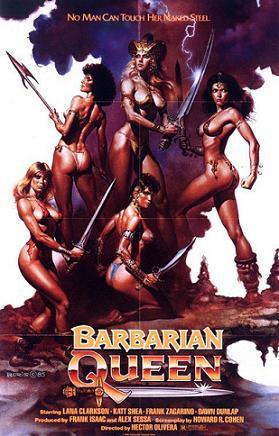
Not quite sure where the extra barbarian came from.
I first became aware of Barbarian Queen in the distant days before Yakmala when I went to a friend’s house for a bad movie night. Remember when I complained about all the rapeyness in Deathstalker? Well, this one is so bad, my friend posited that the world of Barbarian Queen operates entirely on a rape-based economy. Yeah… so that’s the kind of thing we’re dealing with here.
Tagline: No man can touch her naked steel
More Accurate Tagline: Pretty much everyone is going to touch whatever they want
Guilty Party: Writer Howard R. Cohen, who also wrote the first, fourth, and possibly third Deathstalker movies, Emmanuelle 5, eight episodes of Rainbow Brite, and a couple episodes of something called Lady Lovelylocks and the Pixietails. I don’t know if that last one is a Saturday morning cartoon targeted at girls or something you see on Cinemax after midnight. Maybe both.
Synopsis: In what we now have to acknowledge is Howard R. Cohen’s trademark, we open on a rape. Those had to be really upsetting episodes of Rainbow Brite is what I’m trying to say here. This time, a pair of black-armored men capture blonde Taramis by the river. Fortunately, it’s an ‘80s movie rape instead of a ‘70s one, so we don’t have to stick around and watch.
Then we’re at a peaceful village of barbarians, where everyone is dressed like a bunch of butt rockers doing an offensive Native American video. It’s the wedding day for Amethea (Lana Clarkson), and Argan (some guy reading off cue cards). While they fret over Taramis (she’s Amethea’s sister), a whole bunch of black armor guys come in, rape, kill, pillage, and cart off everyone as slaves. The only ones that remain are Amethea, wimpy Estrild (Katt Shea), and badass Tiniara. They decide to head off to rescue their pals. Unfortunately, they are wildly, recklessly incompetent at nearly everything.
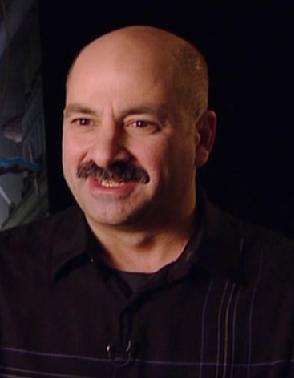
Which is why they were quickly hired by DC Comics.
On their first stop, they find a bad guy outpost where Taramis is being held. She has also been at least mildly brainwashed here, though I’m not sure how much brain there was to wash in the first place. Amethea and Tiniara ruthlessly butcher the bad guys using a combination of cautious stuntwork and flinching swordplay.
Then they run into a band of surly rebels. I never caught their names, so I’m calling the leader Eyepatch for obvious reasons, and his daughter Jody, because she looks like every character from the late ‘70s and early ‘80s named Jody. Jody is all for joining Team Barbarian Queen — which for her mainly consists of standing about fifteen feet away with no expression on her face — but Eyepatch thinks they’re troublemakers. Eventually, they get the good guys into the bad guys’ walled town through an underground passage beneath a cloth-dyeing facility.
Taramis wanders off, and when Estrild follows, two guards capture Estrild, rape her and throw her into the dungeon. And the rape is just that perfunctory. It’s like how these assholes stamp passports or something. Amethea finds the captured menfolk being trained as gladiators, and then she and Tiniara get captured. Great job there, ladies.
It’s time for torture, because that’s what kind of movie we’re watching. Tiniara momentarily escapes, but is swiftly killed. Estrild gets thrown into the brothel/sex room where ladies service the gladiators. Taramis decides to become the kept woman of the bad guy leader. Amethea escapes — pretty awesomely for this movie, and we’ll get there — and somehow manages to engineer what is almost a plan.
The rebels suck, but there’s a lot of them. The gladiators are awesome, but there’s only a few of them. The plan kind of happens, and like everything else, it’s a total fiasco. Amethea fights the lead bad guy, who is this old fat dude, and she can’t even take him. Taramis has to snap out of it and shank him from behind.
But hey, the good guys won.
Life-Changing Subtext: Women can do anything a man can do, so long as they don’t mind being raped.
Defining Quote: “You went first last time. This one’s mine.” This is said by the guards right before they assault Elstrild. She’s a major character, and this is the respect the narrative shows her. It’s like they were checking the script and were all, “Howard, we have a mistake here… I don’t think Estrild gets raped.” “Oh, shit, we can just throw a little pickup scene in here. Good catch, man. Good catch.”

“Welcome, Mr. Cohen. I have such sights to show you.”
Standout Performance: I don’t know the actor’s real name or the character’s name, but the guy who runs the brothel thing that serves the gladiators is Varys. He’s not actually Varys, but he totally is. Only he throws a ridiculous fu manchu mustache on top of it, and plays the whole thing like that jerk on The Simpsons who says, “Yeeeeeees!”
What’s Wrong: Cohen appears to have been trying to make a distaff version of Deathstalker. This was a viable low-budget genre at the time, and it was chiefly known for people wandering around in not much clothes. Makes sense to grab a couple ladies from the nearest Ratt video, give them some swords, and film the results. I also — and this might be from the time I live — think that he was trying to make something at least a little empowering, albeit with the leering objectification of the time. As the synopsis hopefully makes clear, he did not succeed.
Flash of Competence: If you like ‘80s hair metal women, you could do a lot worse.
Best Scenes: There’s a character I really enjoy for no reason. In my notes he’s called Mustache, and he basically looks like one of those fat Coney Island strongmen from like 1850. Somehow he discovered time travel and appears in Barbarian Queen as a gladiator. He’s initially a rival for Argan, but then he joins the rebels, but in the final scene he decides, nope, he’s a double-traitor. It’s like he was written as a wrestler who can’t decide on his alignment. Maybe the whole story is a tragedy about Mustache’s undiagnosed Bipolar Disorder, and when Argan hugs him to death (that’s seriously what happens), we were supposed to weep.
Transcendent Moment: I mentioned that Amethea kills the torturer. It’s how she does it that’s special. She’s tied to this rack and the more she struggles, the tighter it gets. Because this is the kind of movie we’re dealing with, the torturer decides he’s going to rape her. Turns out, that was the wrong thing to do. Amethea has been super into her Kegels. She wraps him up and just squeezes like a python trying to get a bunny to pop. And it works. The torturer, panicking and in agony, unties her. Then she pushes him into a vat of acid.

Prince later wrote a song about it.
Barbarian Queen is pretty much everything bad about this specific subgenre. It’s a shame its occasional goofy charm is mired in all the misogyny.
Filed under: Projected Pixels and Emulsion, Yakmala! Tagged: Barbarian Queen, Deathstalker, Howard R. Cohen, Katt Shea, Lady Lovelylocks and the Pixietails, Lana Clarkson, Rainbow Brite, Yakmala!

March 6, 2015
Lifetime Theater: Amanda Knox: Murder on Trial in Italy
Like the majority of the civilized world, I spent the latter half of last year listening to Serial. While I can’t call my interest an obsession — a friend of mine has taken that term and now holds it in a death grip she will never release it from — I was enthralled by the story of Adnan Syed. I’ve always had an interest in true crime, I suspect because I have yet to be a victim of anything truly horrible, and thus it’s darkly entertaining rather than PTSD-inducing. One of the more irresponsible, yet completely irresistible, consequences of the true crime genre is that it pretty much guarantees you’re going to speculate and even decide on everyone’s guilt or innocence. You know, that whole thing that we have a ridiculously complicated justice system to deal with. We’re not going to get the full story, but the format, whether it’s movie, podcast, article, or anything else, makes us feel like we are. So by the end of it, we “know” who is guilty and who is innocent, and that’s kind of a terrible thing.
Except, come on, we all know Jay did it.
This week’s movie is one such example. I read the case in the two phases of public opinion it went through. I had assumed everyone was on the same page about Knox’s guilt, but after talking it over with friends, that appears not to be the case. Then again, my entire knowledge of the case comes from the original news coverage, some later articles, and of course, this production from the good people at Lifetime. What do I actually, for sure know? Not much. Yeah, I’m a published detective novelist, but that doesn’t mean I know shit. If I try the case entirely from what I’ve seen? Foxy Knoxy is innocent.
This is another one of those movies that feels like it’s straddling the Lifetime of the past and the Lifetime of the future. It’s the story of a mother and a daughter (and two father-figures who have like three lines of dialogue between them) persevering over a corrupt system more interested in slut-shaming than justice. It’s also a Law & Order-ready retelling of a famous case. Unlike some of the other recent Lifetime productions, that really look like they’re trying to look like, you know, actual movies, this one is shot almost like a sitcom, with the overwrought performances the casual viewer has come to expect. Yes, there are times where this retelling of the tragic murder of a young woman is fucking hilarious. I feel like maybe Meredith Kercher deserved better.
That’s the crux of the story. Meredith Kercher was a British exchange student studying in Perugia, Italy and living in a house with three other young women, including Amanda Knox of Seattle, Washington (played here by Hayden “the Cheerleader” Panettiere). I have no idea if the depiction of Perugia is accurate, but if it is, holy shit, the streets are paved with weed there. It’s less a town and more an object lesson in why parents should never allow their kids out of the country. That was probably the intent of the movie in the first place. “See, if you go to Italy, you’ll have premarital sex with a creepy Italian programmer, do all the drugs ever, then get implicated in a horrific murder.”
Knox returns home one morning after a night of sex and drugs with the aforementioned programmer, Raffaele Sollecito to find a little blood in the bathroom and a locked door. The cops fortuitously just show up and break into Meredith’s room (the door’s locked and she never does that), and find her dead on the floor. The cops quickly focus on Knox, whose alibi is shaky, whose behavior is strange, and who gets fingered (not like that) by some inconvenient, though not damning, eyewitnesses. They even get a bit of a confession from Knox, who also implicates her boss, Patrick Lumumba. Open and shut, right? Let’s do to her whatever it is Italians do to criminals. I’m guessing feed them substandard lasagna and table wine?

When you’re here, you’re guilty of a crime.
Not so fast. Here’s the thing: there’s really no physical evidence implicating Knox (or, obviously, Lumumba). The extremely salacious tale cooked up by the prosecution — an argument turned to gang rape turned to accidental murder — looks to be just that. The only witness against Knox is the guy they eventually convicted of committing the murder, and he got a reduced sentence in exchange for the testimony. As for Knox implicating herself, it was like the Italian cops read up on how to elicit a false confession. Well, not the cheesy montage part. That was all Lifetime. As was the weird focus on that scene on her water cup. This… this is not the best one of their movies.
Meanwhile, Marcia Gay Harden plays Knox’s mom, who would also be the POV character for who Lifetime imagines their average viewer to be. So while Amanda herself has some flaws — sex, drugs, and not cleaning up the bathroom — Edda Mellas (she remarried, and still is on good terms with Amanda’s father) is allowed to be relatively perfect. Lifetime moms come in two varieties, the steely matriarch who crushes opposition with righteous cowgirl lightning, and the weepy-yet-determined mama who didn’t ask for this, thank you, but she’s going to get through it one way or the other. Mellas is the second, and she kind of doesn’t, as history has conspired to make this Lifetime movie end on a bit of a down note. Knox was convicted of the murder and got twenty-six years.
Because the Italian justice system was based on the Roman system of “let’s all drink water our of lead pipes and see what happens,” it’s completely bananas. Knox appealed and won her case, but then was re-tried (double-jeopardy is not a thing over there, except on Jeopardy), and convicted again. I think she even got a worse sentence the second time, too. Knox was no dummy and now lives in the States. While I’m certain the Italian government would like her extradited, the State Department has presumably replied to any such requests with a few condescending chuckles.
So why is Knox still convicted in the minds of the public? Well, there’s the obvious: she might have done it. I don’t think she did because of my deeply flawed understanding of the case. I think that a drooling press corps — the term “paparazzi,” is, after all, Italian — took a pretty American college student who was enjoying the freedom of living in Perugia and again, this place seems like a nonstop ‘70s party, and assigned her guilt. Some of this was due to her having a lot of sex and attempting to smoke her weight in hash, but isn’t that the purpose of college? As for why she might not have been super-deeply effected by the murder on an emotional level: She knew Kercher for all of two months. Remember, the best motive the cops could come up with was “they fought about cleaning the bathroom.”
So what did we learn? “Foxy Knoxy” was a nickname that comes from her pee wee soccer team, suggesting that if I ever have a daughter, I won’t let her play soccer in Seattle. We also learned that the Italian police are just as devoted to false confessions as the LAPD, and that if they get one out of you, don’t implicate anybody else. Unless they promise you reduced jail time, in which case go nuts.
Filed under: Projected Pixels and Emulsion Tagged: Amanda Knox, cops, Hayden Panettiere, Italy, Lifetime, Lifetime movie, Lifetime Theater, Meredith Kercher, Patrick Lumumba, Perugia, Raffaele Sollecito, Sodom and Gomorrah

February 27, 2015
Now Fear This: Cast a Deadly Spell
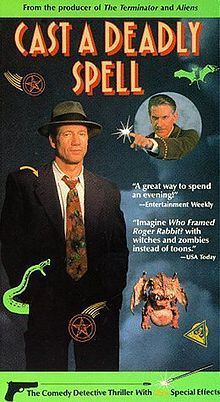
That would be a VHS cover box. Another form of magic.
There was a time before HBO was known for its original programming. The first shows they did try were hardly the critical juggernauts and audience darlings of today, either. Tales From the Crypt might have enthralled a young Captain Supermarket, but it is primarily famous for the terrible puns slung around by its puppet host. Dream On was a mildly smutty sitcom that promised far more nudity than it ever delivered. Yet there was a brief period in 1990-1991 when HBO produced two great cult flicks that indelibly imprinted themselves on my psyche: the revisionist comic-western El Diablo, and this week’s movie, the occult neo-noir Cast a Deadly Spell.
The concept, as explained in a quick graphic, is brilliant in its tantalizing simplicity: it’s 1948 in Los Angeles, and everyone used magic. Because of the year and location, it can only be film noir. The best way to get into a “everybody does/is something” conceit is to have it star the one person that doesn’t/isn’t. In this case, that’s the only detective in LA who doesn’t use magic, ex-cop and current private dick (his sex machine status with all the chicks is unconfirmed) H. Philip Lovecraft (Fred Ward). While it would be tempting to call this movie the rosetta stone of my entire aesthetic, that’s slightly inaccurate. The cult cinema of the ‘80s (and I’m including 1991 as the ‘80s because fuck you I make the rules here) is the true rosetta stone. But I would be lying if I didn’t acknowledge the heavy debt I owe this particular movie, especially for a certain book about the “only normal detective in old Los Angeles.”
Like every good film noir and supernatural detective plot, it uses one of my very favorite tropes, the “minor crime reveals major plot.” Essentially, this means that a simple errand for our heroic shamus rapidly turns complex as his employers and enemies have vast, world-shaking conspiracies. While it’s immediately recognizable from classic films like Chinatown, it has a strong basis in reality. Ted Bundy was captured by a routine traffic stop. Enron’s wrongdoing was uncovered because people thought the stock was priced a little high. Watergate, the shorthand for all scandals, was uncovered after a simple burglary revealed widespread corruption in the Nixon white house. In Cast a Deadly Spell, the employer, Amos Hackshaw (David Warner, doing his David Warner thing), hires Lovecraft to find this missing chauffeur who also absconded with a rare, but ultimately harmless book. The book’s name, however, is instantly recognizable to anyone who has read the real Lovecraft’s work or even just likes Bruce Campbell movies: it’s the Necronomicon. And we know that harmless is the last thing it is.
Lovecraft, though, is clueless. And like any good hardboiled protagonist, wastes no time getting himself neck deep in trouble. While his landlady, the delightful witch Mrs. Kropotkin tells him that the omens are seriously bad and he should leave town (she suggests Miami), Lovecraft isn’t going to follow that warning. Instead, he stumbles over his old partner, Harry Borden (the great Clancy Brown) who was chased out of the force on corruption charges, is now a nightclub owner and probable organized crime figure. His diminutive button man Mr. Tugwell uses magic in his hits, but for more conventional muscle, they rely on zombies. “Thirty dollars a head, six to a box,” Borden says. “Like bonbons,” Tugwell adds dryly. Borden’s top draw in his club — The Dunwich Room — is the gorgeous singer and Lovecraft’s old flame Connie Stone (a young Julianne Moore).
When this came out, I was at the height of my Call of Cthulhu playing career. The relentless Lovecraft references, especially those at the heart of the mystery, might as well have been crack to my young mind. It was the first time I felt like those making the entertainment I consumed were fans of the same things I was. While this feeling seems common now, especially with the way social media has compelled and encouraged artists to connect with fans, at the time it was a revelation. With my weird noir fandom already firmly in place, it felt like a movie aimed directly at me, and it hit the target.
The impressive thing about the movie is that the world feels lived in. Director Martin Campbell (Goldeneye, Casino Royale) and writer Joseph Dougherty (lots of TV shows I’ve never seen) really run with the idea of a culture utterly reshaped by magic. It’s the small details at the fringes that bring the world to delirious life, whether it’s a group of kids chanting until the hubcaps blow off a car, a man lighting a cigarette on his own hand, or a murder-by-voodoo doll. The monsters aren’t left out, with the cops grilling a werewolf, a gargoyle henchman, and in the best of these sequences, a hapless zombie work crew putting up a suburban housing development. The actual in-plot uses of magic are just as good, with Tugwell’s murderous whirlwind made from a dummy payoff counting as my favorite. Best of all, we never get an origin story of when magic shows up. The characters know when this was — and it’s implied to be recently — so they don’t waste time flapping their gums about it. Why would you when it’s raining blood outside and your car engine is infested with giggling gremlins?
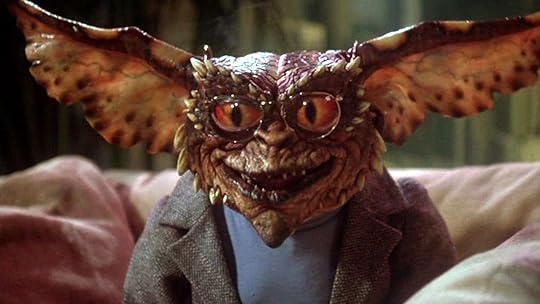
All they want is a little civilization.
The cast does an admirable job anchoring the weirdness in well-worn noirish performances. No one is playing to the cheap seats, and the winks are never condescending. This is the kind of ready-for-cult-adoration flicks that were thick on the ground back then. It’s right on the tail end of the era where movies like this could get made, before Kevin Smith and Quentin Tarantino ushered in the cinematic ‘90s which were great for crime and slice-of-life indies, but not wonderful for genre oddities. The downside is that this was a made-for-TV movie, and the lack of budget can sometimes show on screen. More than anything, it looks like an episode of Tales From the Crypt, and it would not surprise me if both productions had largely the same team.
Like the best noir, I feel compelled to keep the mystery largely under my hat, though genre savvy viewers could probably unravel it. Though it has another of my favorite tropes, when a seemingly pointless subplot becomes of vital importance later on. Of course, this is also horror, so that subplot turns relevant in the most ironic possible way. Much like Belloq learned, just because you can talk to a god doesn’t mean the god wants to talk to you.
The worst part of this is that there is no DVD release for Cast a Deadly Spell, and unlikely there will ever be one. It exists now on Youtube, and from the looks of it, was uploaded from a flawed VCR copy made at the time. So you can (and should) watch it, though it’s basically like viewing a movie through a haze of cigarette smoke. Then again, there’s nothing more appropriate for the genre.
Filed under: Projected Pixels and Emulsion Tagged: cast a deadly spell, Clancy Brown, David Warner, film noir, Fred Ward, HBO, Julianne Moore, magic, Now Fear This

February 20, 2015
Yakmala: Winter’s Tale

“Your nose smells like hot dogs.”
Some movies take a long and circuitous route to cult infamy, from a chance viewing by a tastemaker to sold-out midnight showings presided over by a delusional auteur. Some movies hit their notoriety out of the gate, baffling viewers with a very simple question: “How the fuck did anyone allow this to happen?” 2014’s magical realist romance Winter’s Tale is one of the latter.
Tagline: This is not a true story. This is true love.
More Accurate Tagline: This is not a true story. True stories generally make at least a lick of sense.
Guilty Party: Akiva Goldsman is a legitimate Hollywood powerhouse. He’s written some terrible movies that a lot of people have seen for some reason and has produced other, different terrible movies that a lot of people have seen for presumably the same reasons. This is sometimes known as the Blueprint of Hollywood Success. He cashed in some of this power to create a true passion project, adapting the novel Winter’s Tale and serving as writer, director, and producer of his own film. This makes Winter’s Tale an anomaly in the modern blockbuster era: a true auteur project. It’s also completely insane and borderline unwatchable, also marks of about half auteur films.
Synopsis: Christ.
The movie opens by bouncing between times like Marty McFly after he got into the Ritalin. First, there’s 2014 New York, where Colin Farrell is a surprisingly clean homeless Jesus who lives in a ceiling room in Grand Central Station. Then we’re in 1895, where a family of immigrants from The Old Country try to get through Ellis Island only to find that they’re not wanted. Instead of returning to the pogroms and potatoes (oh god, the endless potatoes), they put their infant child in a model boat, complete with nameplate “City of Justice” (because fuck you, subtlety), and set him adrift in the harbor.
Through it all there’s some narration in an English accent (we find out later this is the voice of Beverly Penn, the female lead), babbling about magic or some such. The 1895 scenes and the vanity cards are all in sepia and I’m already exhausted.
Then it’s 1916, so for anyone keeping track, 37-year-old Colin Farrell (assuming his imdb page isn’t shaving points) is playing 21-year-old Peter Lake. Now, Farrell doesn’t look bad for his age, but he’s not a young 37. He’s a partied-a-lot 37. He’s running from a gang of thugs led by scarred kingpin Pearly Soames (Russell Crowe). Pearly’s mad about… something. Peter escapes when he happens on a white horse that can fly on CGI rainbow wings. Yes, that’s about as much preparation as you get for that.
Meanwhile, the wealthy Penn family is dealing with elder daughter’s Beverly’s tuberculosis. For some reason, the movie seems to think that consumption and the slow transformation into the Human Torch are the same thing, because Beverly is literally being boiled alive. She has to sleep in a tent on the roof (it’s winter, you know, because of the title), and takes chilly baths. Her dad, William Hurt, is concerned in that weary way that William Hurt feels everything. She thinks her fever gives her superpowers, but it only lets her see CGI lens flare.

The ideal of Victorian beauty.
Pearly, still upset, puts a bounty on both Peter and the horse, which he claims is actually a dog. This later gets “explained” by Graham Greene’s character (who shows up to be Native American), as the angel known as the “White Dog of the East” appearing as a horse. I’m sure this is the kind of thing that sounds so brilliant and magical on the page, but seriously, just pick a goddamn animal. Either it’s a horse or it’s a dog, but don’t call it a dog unless you’ve been hit so hard on the head that the word “horse” leaked out along with your ability to control your bowels.
Influenced by the White Dog of the East, Peter breaks into the Penn household and meets Beverly. They flirt and fall in love. Yes, it’s just that fast. Graham Greene also tells Peter about how everyone has a miracle and each miracle is intended for one other person. Angels and demons will try to influence this one way or the other.
Pearly draws up a truly terrible sketch of who everyone assumes is Beverly, and sends his people out to look for her. Around here, it becomes clear that Pearly is actually a demon disguised as a gangster. Somehow his awful sketch leads the demons directly to Beverly, but then Peter rides up at full tilt out of nowhere and saves her. They ride upriver to the fancy Penn house, where William Hurt warms up to him (motif!) after they fix the boiler (motif!) together.
Pearly is upset, so he visits The Judge (more on him later). See, demons can’t go upriver because stories like this always have bullshit “reasons” that the supernatural creatures can’t do whatever. The Judge shoots him down, so Pearly gets an angel who owes him a favor to spike Beverly’s drink. All it will do is raise her heart rate if she gets excited. So, when Peter takes her on a romantic journey to Pound Town, she dies. Her little sister Willa had a special “princess bed” made in a greenhouse, and said if Beverly’s kissed there, she’ll recover. Peter takes her there, but nope. She dies.
Angry, Peter rides into town and confronts Pearly, who seems to think his own head is a fist. He headbutts Peter into submission then throws him in the Hudson. Peter crawls out, and loses his memories until 2014. Now he’s drawing a version of Pearly’s crappy police sketch.
One day in the park, he runs into single mom Jennifer Connelly (she has a name, but seriously, who cares, this is the last half hour) and her adorable moppet who is dying of cancer, because fuck it, we’re in a Nicholas Sparks novel now. It turns out that the little girl is who the picture is really of, so Peter’s miracle might be for her. So with the help of the horse, he’s going to fly the little girl to the princess bed, where he’s going to kiss her cancer away.
And look, I like Colin Farrell. He’s been in a couple really good movies, and he’s been great in them. But you can’t have him kissing a little girl on a bed and not have it sound fucking horrifying.
Pearly senses that Peter is still alive somehow, and he gets permission from The Judge to fight Peter. Problem is, he’ll have to do it as a mortal. So Pearly rolls up on Peter just outside the Penn house on a frozen river. Only Pearly, like a dipshit, shows up with six carloads of goons. That’s when the horse shows him one of the principles of frozen water, by jumping on it until it cracks and spills the bad guys into the drink. Then Peter and Pearly fight, which ends when Peter shanks him with the “City of Justice” nameplate.

SUBTLETY
Pearly turns to snow… I don’t know, magically or whatever. Peter takes the little girl inside, kisses her better, and that’s his miracle. See, Beverly’s miracle was just making him love so much he didn’t die, I guess, and so he could save the cancer girl. Then Peter flies up and is a star.
Life-Changing Subtext: Everyone gets a miracle, but if you’re a woman, it’ll only be about helping a man do something cool.
Defining Quote: From the opening narration: “What if, once upon a time, there were no stars in the sky at all? What if the stars are not what we think? What if the light from afar doesn’t come from the rays of distant suns, but from our wings when we turn into angels.” I think I read this on a Precious Moments figurine one time.
Standout Performance: Russell Crowe is terrible, but man, he’s entertainingly terrible.
What’s Wrong: Even if you hold with the glacial pacing and the magical realism hokum, the movie goes wrong in some weird ways. The accents are fucking bizarre. In the most obvious, you have Colin Farrell doing his standard Oirish brogue. Only he’s the child of Eastern European immigrants raised an orphan in New York. It’s implied that Russell Crowe raised him (though after Graham Greene also raised him), and Crowe is doing a straight-up Lucky Charms accent. So we’re supposed to think that’s how it happened?
It’s not confined to them. William Hurt does his American Standard accent and his daughter could not have been more British if she’d been played by a crumpet. Does Goldsman think we pick our accents out of a hat?
Ages are pretty problematic as well. Crowe is only 12 years older than Farrell and he’s supposed to have raised him. Okay, he’s an immortal demon, so maybe that works out. But again, Farrell is supposed to be 21, and he’s romancing Beverly, also 21. That’s fine. The actress is 13 years younger than Farrell, and she’s British prep-school young. It’s a skeevy old man trying to hook up with a virginal apple-cheeked shut-in. But you know, romance!
Flash of Competence: The sets are really nice, and some of the shots of 1916 New York are legitimately beautiful.
Best Scenes: There’s a character in the film called “Cecil Mature.” He appears twice, first when Peter gets the horse and wants to board him, then later to help Peter run into cancer girl. Cecil Mature is what happens when a writer sees the idea of the “Magical Negro” and goes, “That’s an incredible idea!” Seriously, if they replaced the character with a coin, maybe with a plot point scribbled on it, there would be no difference in the film.
Come to think of it, that’s the purpose of every non-white person in this movie. And non-male person as well.
Okay, it’s time to talk about The Judge, since that’s the big cameo here. It’s Will Smith. And it’s not even Will Smith playing a character. He’s even wearing pretty much what you imagine Will Smith wears in his day to day life. The anachronistic clothes are supposed to be a nod to the fact that he’s Satan — yeah — but it comes off like they found him wandering in the parking lot and decided to put him in the movie. Pearly refers to him several times as “Lou” which is exactly the kind of flourish idiots think is clever.
Transcendent Moment: The sketch. Oh, god, the sketch.
Pearly initially paints it in the blood of a waiter who refused a request for spotted owl (don’t ask). It’s about at the level of a two-year-old with motor neuron disease discovering fingerpaints for the first time while in the middle of an earthquake. Eventually, it becomes apparent that this is a sketch of the back of someone’s head. Also known as the part of the head without the identifying bits.
That’s what this dumbshit was sending his goons out to find. The back of a woman’s head, and then he had the temerity to be shocked when they got the wrong person.
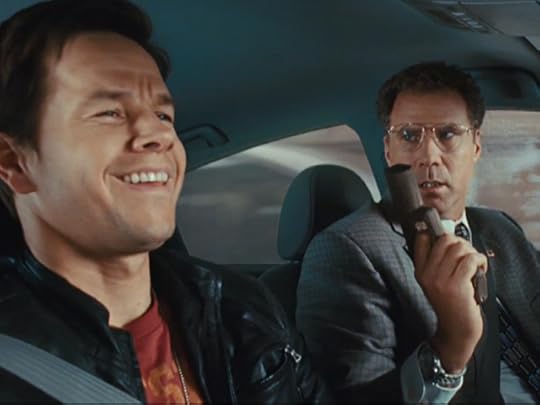
Turns out he was just waiting for Faceback.
Winter’s Tale oozes with sincerity in every frame, and along with its other surreal miscalculations, makes its early reputation as a famous trainwreck entirely deserved.
Filed under: Projected Pixels and Emulsion, Yakmala! Tagged: accents, Akiva Goldsman, Colin Farrell, Graham Greene, horses that are also dogs for some reason, magical realism, Russell Crowe, william hurt, Winter's Tale, Yakmala!

February 13, 2015
Lifetime Theater: Foreclosed
There was about a minute back in 1996 when we thought Jamie Kennedy was going to be a reliably entertaining screen presence. Hey, don’t blame us for that shit. It was the mid-‘90s and the entertainment universe was in the process of going completely insane. Kennedy somehow wound up as one of the best parts of the best revisionist slasher flick ever made, the Wes Craven masterpiece Scream. Maybe I’m biased, because in that movie, he’s basically just playing me. If you didn’t know me in 1996, see Scream. Now you do. To all those who did know me back then, I am so very sorry for being such a tool.
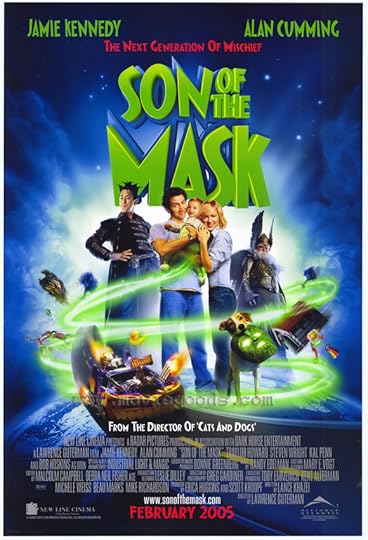
And for Son of the Mask.
In the time since then, Kennedy has been doing everything he can to convince us that Scream was a total fluke. He manages to embody this unappealing cross between an overbearing frat bro and a sniveling nerd, while his standup comedy varies from the mildly hacky to the brutally unfunny. His “First Night 2013” was a legendary trainwreck before it was even finished airing. He has cultivated a mean-spirited persona, and while there’s nothing wrong with that on the surface, to sell it, you kind of have to be funny. It doesn’t help that he helmed a documentary, the thesis of which was “why are all these people being so mean to me?”
Kennedy was the star of this week’s Lifetime Theater, but in true career-implosion fashion, I had absolutely no idea he was in it until the cast list rattled off the screen. He isn’t the only recognizable name, either: Paul Sorvino and Academy Award-winning actress Marlee Matlin play father and daughter. So, if I told you Marlee Matlin and Jamie Kennedy were in a movie together, the chances of his character mocking Matlin’s for her voice are close to 100%, right? He does, several times, and it’s awful. Then again, Kennedy’s actually supposed to be awful in movie. I couldn’t help wondering if those were adlibs on set. And then I started wondering if Matlin could tell she was being mocked by reading lips or if someone had to tell her later. That would have been an awkward day.
The movie concerns one of the most popular problems of the post housing bubble pop: foreclosures. What, you couldn’t tell from the title? C’mon guys, get it together here. It purports to be based on a true story, but I’ll be honest. I didn’t check up on that, so we don’t know if it’s based on a true story in that everything happened but only the names were changed, or if foreclosures are a thing that happens in real life and something like this could have happened, if we all just dream a little harder.

Clap if you believe in home invaders!
The thing is, this did happen. In movie theaters. Foreclosed is a throwback to the early-mid ‘90s preoccupation with films about ostensibly normal people who go berserk and take revenge upon a suburban family for possibly imagined slights. It feels a bit like The Hand that Rocks the Cradle, if instead of Rebecca de Mornay, you have Jamie Kennedy, and to everyone now picturing him in a soaking-wet nightgown, I’m sorry. So Kennedy is starring in a movie that was last popular right around his heyday as a welcome screen presence. I’m not even sure if that’s irony.

It’s the mid-’90s. We could ask the expert.
Jamie Kennedy plays the kind of creepy electronics genius loser that was in every other one of these movies. He has just enough know-how to wire an entire house with state-of-the-art security, hidden cameras, and listening devices, but not enough to hold down a job. That’s even a plot point: he had an electronics store that went belly-up. With the recent RadioShack news, this definitely qualifies as truth in television. Anyway, because of this, he is no longer able to make payments on the brand new McMansion his mother was living in. They also try to pretend that this thing, which was clearly a patch of hilly desert outside Los Angeles about 45 minutes before they started filming, has been in the family for at least a generation.
He gets foreclosed on, and Marlee Matlin’s family swoops in and buys it for a song. Not a literal song, so don’t expect Matlin to belt out “Cotton-Eyed Joe” or anything like that. Kennedy’s character — Forrest Hayes — isn’t taking that lying down, so he embarks on the kind of pranks, harassment, and outright murder that people do in movies like this, before he goes totally unhinged and builds a bomb in the third act. I always feel bad for the bystanders in movies like this, as the family can’t be harmed until the end (and they usually all make it out fine), but to prove the threat, the crazy person takes out a couple peripheral characters. In this case, it’s his lawyer (who realizes Hayes is a liar in the middle of a press conference), and the nosy/sweet next door neighbor. Hayes’s weapon of choice is one of those handheld stun guns, which he uses by grappling with the person, then shocking them. Bad news, dude. You just knocked yourself out as well.
Hayes first tries to get the family to turn on each other. It’s surprisingly easy, despite how close they are in the early going. The dad is a recovering alcoholic, so Hayes plants signs the old man is off the wagon. He cleans out their bank account with a bunch of bogus gambling charges. Hayes also poses as an online friend to the daughter, and he uses this hilarious deep voice that makes him sound like a parody of a child molester — and with the wispy mustache and the birth control glasses, it’s an easy leap to make. There’s a line that implies the daughter is reading 50 Shades of Grey, too, so maybe he’s preying on that. That movie might be a little different if they switched up Jamies — Dornan for Kennedy. Bet Christian Grey’s creepy-ass behavior might be seen in a slightly different light.

“Give me your tampon.”
Anyway, he does all of this inside an honest to god Batcave. The Jamiecave. It’s not revealed until the third act that this McMansion has an entire Gitmo below the surface, built as a bomb shelter by Hayes’s old man, so for the bulk of it, it’s just Hayes in the Jamiecave, watching the family. The movie really drops the ball by not giving him a Jamiemobile, Jamiebelt, and Creepo, the Boy Wonder.
The family pulls together just in time, after dad’s been arrested and both women have been trussed up, to stop Hayes’s scheme. Well, kind of. He ends up blowing both himself and the house up with a makeshift bomb in the kitchen. In all honesty, it’s exactly how you figure the real Jamie Kennedy will eventually go out.
Kennedy isn’t really even bad here. He doesn’t give us the gift of a Rob Lowe-esque performance, but does inhabit the strange skin of this man. He keeps his eyes averted, he stutters and shifts on his feet, uncomfortable in his own skin. His late-movie freakouts aren’t bad either. All in all, he makes a decent Lifetime bad guy. The best part, though, is when a noticeably out of shape Paul Sorvino has a fistfight with Kennedy in the kitchen. Sorvino is in his mid seventies, yet he ruthlessly pummels the doughy Kennedy until the stun gun comes out.
What did we learn? When buying a new house make sure Jamie Kennedy isn’t living in the vast underground complex beneath it.
Filed under: Projected Pixels and Emulsion Tagged: '90s movies, Foreclosed, Jamie Kennedy, Lifetime Theater, Marlee Matlin, Paul Sorvino, Scream, Wes Craven




